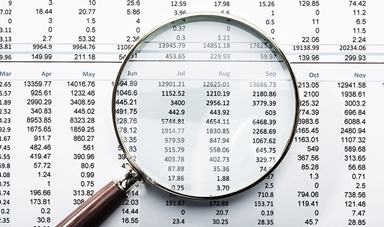Loading component...
At a glance
- Corporate tax transparency has been brought into sharper focus during the past decade.
- Governments around the world have undertaken multiple initiatives to increase tax compliance and transparency.
- These initiatives have led to more data and detailed analysis of the corporate tax base and the performance of large companies.
By Elinor Kasapidis
The corporate tax take, and whether large businesses pay their fair share, has been a hot topic of conversation from the boardroom to the dining table over the past decade.
The discovery of double Irish Dutch “sandwich” structures used by some multinationals to circumvent tax laws brought the discussion into the public consciousness.
Worldwide, governments are tackling the challenges of properly taxing corporates, best exemplified by the Organisation for Economic Co-operation and Development’s (OECD) base erosion and profit shifting (BEPS) program of work.
To address public concerns, successive Australian governments have sought to deal with tax “mischief” using a range of tactics, from stronger laws and Australian Taxation Office (ATO) compliance action through to transparency and tax governance initiatives.
The annual publication of selected tax data on about 2300 large Australian companies began in December 2015, supported by a Voluntary Tax Transparency Code, which prescribes principles and minimum standards to guide the disclosure of additional tax information by its 180 signatories.
The ATO also requires the non-public disclosure of certain tax positions in the Reportable Tax Position Schedule, as well as the lodgement of general purpose financial statements, and receives country-by-country reporting information as part of its monitoring of large corporates.
The ATO’s latest Report of Entity Tax Information shows that almost A$25 billion in tax was paid by the top 12 corporate taxpayers in 2018-2019, which included Australia’s largest banks and mining companies.
ATO analysis shows tax to income ratios for large domestic and foreign large corporates (excluding the 10 largest taxpayers) to be similar, and the ratio increased in the 2017-2018 and 2018-2019 income years.
Tax position versus accounting position
Attention often falls on the 760 corporates with income totalling A$500 billion that paid no tax.
While there is often an expectation that large businesses will be consistently profitable and pay tax at 30 per cent, in its Corporate Tax Transparency report for the 2018-2019 income year, the ATO noted that “the corporate tax transparency data has 32 per cent of corporate entities reporting nil tax paid.
“This proportion is similar to ASX data, which shows about 20 per cent to 30 per cent of ASX 500 companies reporting a net loss to their shareholders in any given year.”
Differentials between profit, taxable income and tax paid are also created by tax concessions, the imputation system and the tax treatment of certain types of income, among others, meaning that it is challenging to assess at face value whether each corporate is paying the “right” amount of tax.
The Corporate Tax Association explains that “the differences in accounting profit and taxable income are broadly attributable to the different objectives...accounting rules are aimed at providing an accurate picture of the economic state of a company at a single point in time [while] tax rules look at income separately to expenses and [they] don’t always match in an accounting sense”.
This means that changes in economic performance, the use of tax incentives as a primary policy tool and the permanent and timing differences between accounting and tax often result in the tax position of a company being quite different to its accounting position.
CPA Australia resource:
The ATO perspective
The ATO publishes supporting information on tax and corporate Australia to demonstrate its perspective of the Australian corporate tax landscape and its approach to addressing identified areas of concern.
In its large company income tax gap analysis, the ATO also states that “the downward trend of the gap after 2013-2014 coincides with a suite of legislative reforms and operational changes”, which includes “the adoption of transparency measures”.
It therefore appears that companies are, by and large, following the law, and that the ATO is focused on ensuring they continue to do so.
Another issue that needs addressing is the “policy gap”, or the impact of tax policy settings on the amount of tax paid by large corporates. Tax policies are often used to stimulate economic activity by providing credits and incentives, such as accelerated depreciation and research and development offsets.
Australia is also a signatory to almost 50 income tax treaties, which seek to avoid or eliminate double taxation and which can change the amount of tax paid in Australia.
Ongoing scrutiny
The Tax Benchmarks and Variations Statement published by the Australian Treasury provides some detail on the cost of these various tax policy settings to taxpayers, but many are unquantified and the information is difficult to reconcile with the public data on large corporates.
With governments worldwide placing pressure on their public finances to mitigate the economic impacts of COVID-19, and the decreasing profitability of many small and medium-sized businesses, it is likely that the dependence of government revenue on taxes from large corporates will increase.
While transparency initiatives have led to more data and detailed analysis of the corporate tax base and the performance of our largest companies, the reality of a complex and globally connected corporate tax environment is that ongoing scrutiny of its largest contributors will continue.

